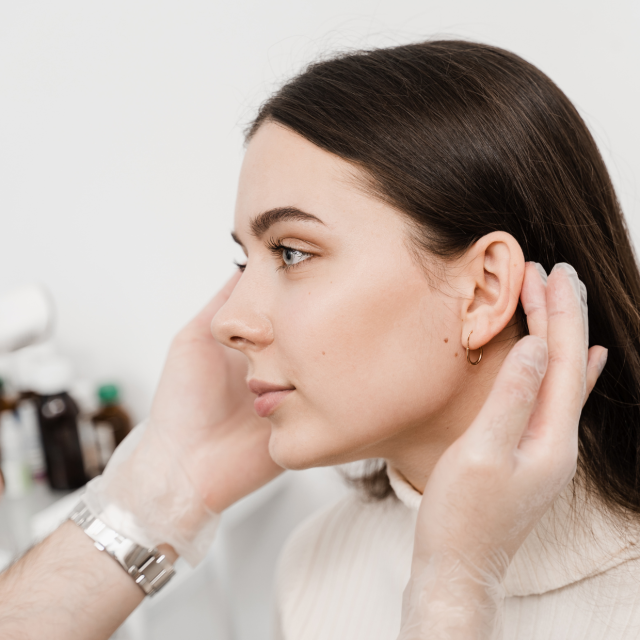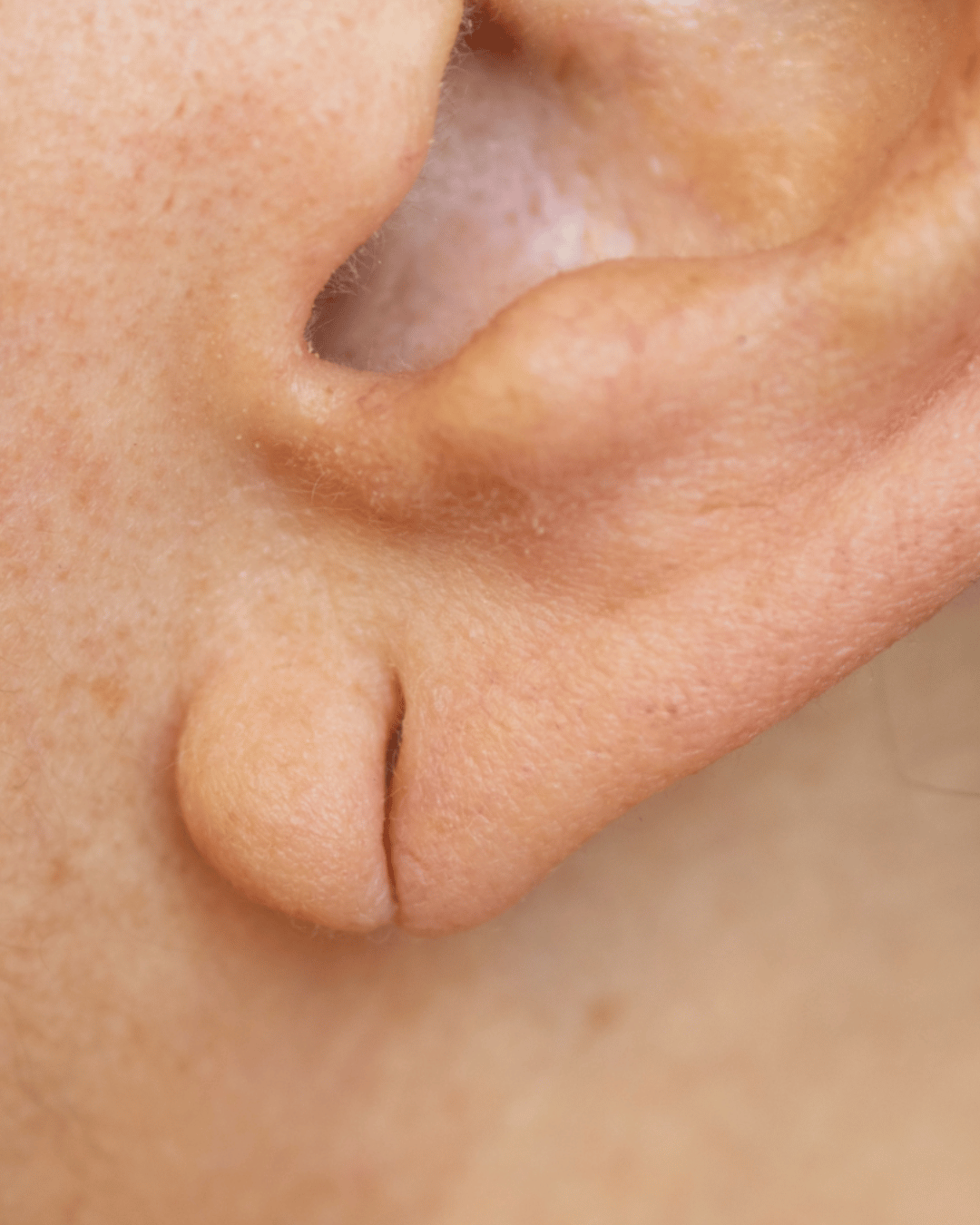
Prominent or split ears can be a significant source of self-consciousness for many people. Whether it’s ears that stick out more than you’d like or earlobes that have been stretched or split due to piercings, these concerns can affect your overall appearance and confidence.

Prominent ears, often referred to as “sticking out” ears, are a common concern where the ears protrude more than normal from the side of the head. This can be due to genetics or the natural shape of the cartilage. On the other hand, split or stretched earlobes usually occur from wearing heavy earrings or accidental trauma, which can lead to elongated or completely torn earlobes. Both conditions can lead to feelings of discomfort or insecurity, but they are easily treatable with the right surgical techniques.
At SRGN our ear correction procedures, such as ear pinning (otoplasty) and earlobe repair, are designed to provide natural, long-lasting results. Whether you’re looking to reduce the prominence of your ears or repair a split earlobe, our team is dedicated to ensuring that your experience is as comfortable and satisfying as possible.
Prominent ears are characterised by their noticeable protrusion from the side of the head. Our ear pinning treatment, also known as otoplasty, can reshape the ear cartilage and bring the ears closer to the head for a more balanced and natural appearance. This procedure is especially popular among those seeking to reduce the visibility of their ears.
Split earlobes typically result from heavy earrings or accidental trauma that causes the earlobe to tear. At SRGN, our earlobe repair surgery carefully sutures the split, restoring the natural shape and appearance of your earlobes with minimal scarring.
Earlobes can become stretched due to prolonged use of heavy earrings or intentional gauging. Our earlobe repair treatments can correct this by removing excess tissue and reshaping the earlobe to its original size and contour.
Otoplasty is a surgical procedure designed to correct the position of prominent ears. By reshaping the ear cartilage and pinning the ears closer to the head, this treatment offers a permanent solution to prominent ears, enhancing facial symmetry and boosting confidence.
Earlobe repair surgery is ideal for those with split or stretched earlobes, Earlobe repair surgery is a quick and effective solution. This procedure involves exercising any damaged tissue and carefully suturing the earlobe back together, restoring its natural shape and allowing for future piercings if desired.
Dermal Fillers in some cases, can be used to add volume to thinning earlobes, improving their appearance without the need for surgery. However, surgical options are typically more effective for prominent or split ear concerns.